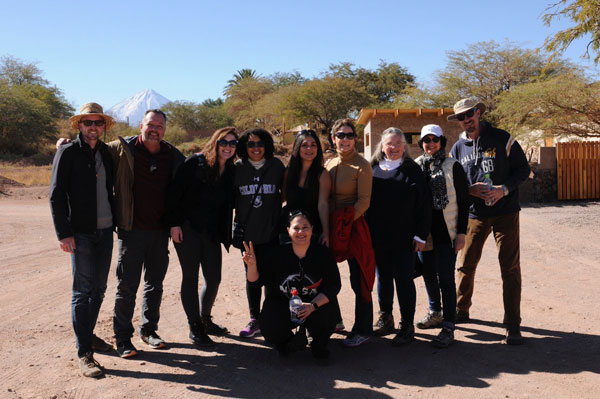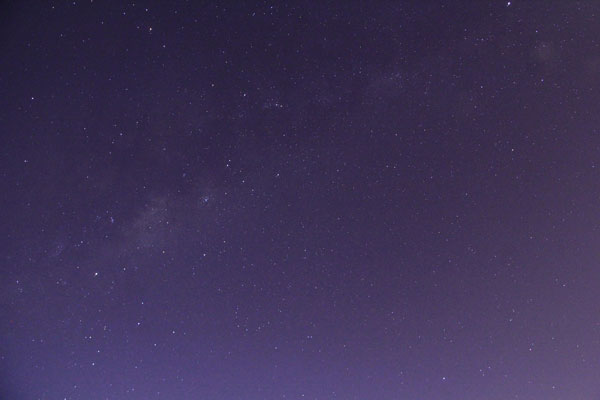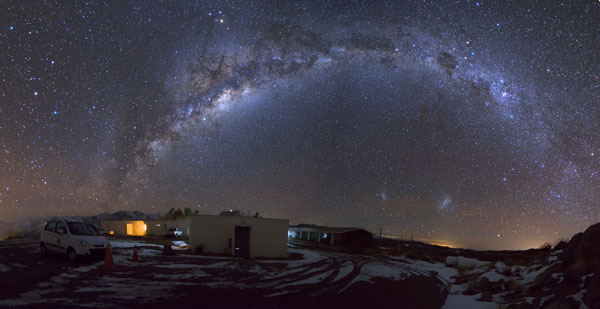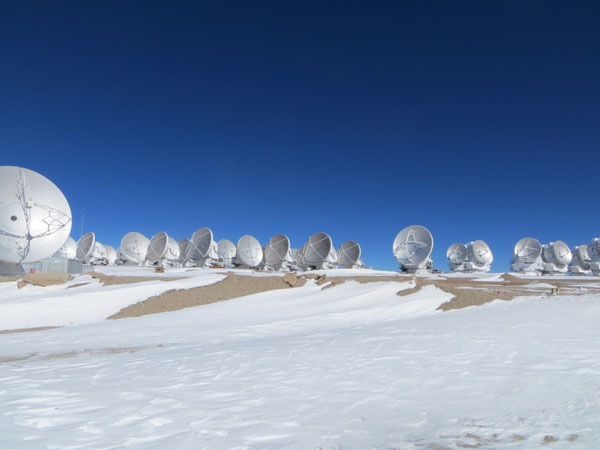The authors had the chance of a lifetime to see true dark skies when they joined the June 2018 cohort of the Astronomy in Chile Educator Ambassadors Program.

E. Ting (ACEAP/NSF)
In June 2018, we joined a team of astronomy enthusiasts with a variety of backgrounds and employment, including middle and high school science teachers as well as planetarium operators and directors, for a 10-day expedition to key astronomy research sites in Chile. As members of the Astronomy in Chile Educator Ambassadors Program (ACEAP), we received extensive training on the science and technology involved in the observatories we visited and learned about their education and public outreach activities.
Due to its unique location on the path of the Humboldt Current, Chile’s clear weather leads to some of the world’s best skies. Large parts of Chile are sparsely populated, meaning light pollution from cities is hardly a problem. Moreover, the northern part of the country experiences (on average) more than 300 cloudless nights each year. Even more important to stargazers, Chile provides a clear view of the spectacular southern sky, which is largely invisible from countries north of the equator. Chile is rapidly becoming the astronomical capital of the world: In the next decade, it will have 70% of the world’s collecting area for optical and infrared telescopes larger than 3 meters in diameter and, by the late 2020s, it will have four (of the five) next-generation telescopes. The Chilean government has embraced the role of its country in the field of astronomy; in late May 2018, the Chilean Congress approved the creation of a government-level "science ministry" to support the further development of education, science, and technology. With three total solar eclipses in the next two years, astronomy professionals in Chile are preparing to be in the solar spotlight.
During the ACEAP expedition, we visited some of the NSF‑funded observatories in Chile, including the Atacama Large Millimeter/submillimeter Array (ALMA) and the Cerro Tololo Inter-American Observatory (CTIO), as well as three private facilities. We enjoyed observing the night sky from all of these locations.
If you are a native of the northern hemisphere, the first thing you notice about the southern sky is that things don’t seem quite right—familiar constellations are upside down. But the one thing you do recognize is the Milky Way. There are few sights as magnificent as the Southern Hemisphere’s Milky Way. From the dark patches of gas surrounded by exotic constellations to naked eye open clusters to the neighboring Magellanic Clouds—a pair of irregular dwarf galaxies only visible from this part of the world—words cannot describe such splendor. But pictures can try.
Our quest to capture the splendor of the southern skies began in La Serena, where we separated from the rest of the group to enjoy some down time and practice capturing those photons. After dinner and a brief walk on the beach, we went back to our hotel rooms, grabbed our cameras and tripods, and headed down to the pool area to practice. What would the camera see under the light polluted skies around the hotel? With the right settings (a long exposure, but not so long that the camera sensor could detect the rotation of the Earth), a bit of patience, and a lot of fun, we were able to capture a faint Milky Way despite the lights.

N. Zellner (ACEAP/NSF)
The next day, we drove from La Serena to the hills where CTIO is located 7,200 feet above sea level and above most of the clouds too. The day at CTIO started with a tour of the Victor Blanco 4-meter telescope and presentations from astronomers about the science being done there, such as the Dark Energy Survey and the recent discovery of 10 new moons of Jupiter! As night fell, the excitement built—this was the first night we would witness the truly dark, pristine southern skies. The night was the coldest many of the team could remember but we all stayed up late—some of us with telescopes, some with binoculars, some with cameras, and some with naked eyes, but all of us sharing a mutual joy of astronomy under the darkest skies we had ever seen.

S. Nagle (ACEAP/NSF)
Our next destination was San Pedro de Atacama, the closest point to the ALMA observatory, where we spent two days attending several talks and meetings to learn about the astronomy taking place at this site.
ALMA studies the microwave portion of the electromagnetic spectrum, a window in the universe that is crucial for our study of the origin of stars and galaxies and the formation of planets. On our last day in the Atacama Desert, many of us traveled up to 16,500 feet to the array itself.

N. Zellner (ACEAP/NSF)
We are honored to have been selected as ACEAP ambassadors this year, and we believe that all of us left a piece of our hearts in Chile. It’s a wonderful country with a rich culture, delicious cuisine, and friendly locals. Not to mention those skies… With just a little bit of practice, we took some amazing pictures and have wonderful memories—and new friendships.
 0
0








Comments
You must be logged in to post a comment.